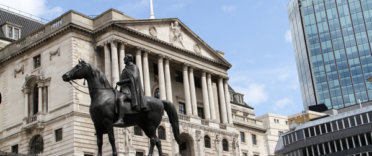
The UK-wide tax increase is designed to raise £36bn for NHS services over the next three years, in what is being called "biggest catch-up programme in NHS history".
The 1.25% hike will switch to a separate tax from 2023, which will be calculated in the same way as NI, but will appear on payslips as a different payment.
Why is tax going up?
The tax hike is part of the government’s efforts to fund a nationwide reform of health and social care, a pledge dating back to 2019, but also to resolve the post-COVID-19 backlog on the NHS.
Most of the revenue generated from the rate hike will be devoted to cutting waiting lists on the NHS, with social care expected to receive just £5.3bn of the target £36bn over the next three years.
Once the NHS backlog has been sufficiently tackled, a growing proportion of the revenue raised will go to funding social care reform. The government plans to implement a new cap on total care costs so that no individual will have to pay more than £86,000 for the cost of their care over their lifetime.
This will allow the government to subsidise care costs for all those with under £100,000 in savings, while those with less than £20,000 will be eligible to have their care funded entirely by the state.
You can read more about the cost of care in our article "Paying for later-life care: What are your options?".
National Insurance rate hike explained
From April 2022, employers, employees and the self-employed will see their NI payments rise by 1.25%. This means that someone on a £20,000 salary will pay an extra £130 over the course of a year, while someone on £80,000 will pay £880 more.
The table below shows how the increase in NI will affect payments for five different salary brackets.
| Annual Salary | Current NI Contributions (2021/22 tax year) | Additional NI Contributions (post-April 2022) | Total NI Contributions (post-April 2022) | NI Contributions as a percentage of income (post-April 2022) |
| £20,000 | £1,251 | £130 | £1,381 | 6.91% |
| £30,000 | £2,451 | £255 | £2,706 | 9.02% |
| £50,000 | £4,851 | £505 | £5,356 | 10.71% |
| £80,000 | £5,479 | £880 | £6,359 | 7.95% |
| £100,000 | £5,878 | £1,130 | £7,008 | 7.01% |
What is the new tax and who has to pay it?
The new tax, which will be introduced from April 2023, will replace the 1.25% NI increase on payslips and will appear as a “Health and Social Care levy”. It will be 1.25% and is effectively a rebranding of the initial NI rate hike.
However, this new payment differs from NI as people who continue to work beyond state-pension age will be obligated to pay it, although those that earn below £10,000 per year will still be exempt from the new tax as they normally would with NI contributions.
Dividend tax hike explained
The government has also outlined plans to raise dividend tax rates by 1.25% from April 2022.
The current dividend tax sits at 7.5% for basic-rate taxpayers, so with the additional 1.25%, most individual investors will see an 8.75% levy on any share dividends beyond the £2,000 tax-free allowance. Higher and additional rate taxpayers will also see their dividend tax rise by 1.25%.
The table below shows how much tax investors must pay on dividends over the annual allowance depending on their tax band.
| Tax band | Current tax rate on dividends over the allowance | Tax rate on dividends over the allowance (post-April 2022) |
| Basic rate | 7.50% | 8.75% |
| Higher rate | 32.50% | 33.75% |
| Additional rate | 38.10% | 39.35% |
More on tax
If you've worked from home for at least one day since the start of the pandemic, you may be entitled to some tax relief. You can find out more and how to apply in our article "How to claim tax relief if you’re working from home". For ways to minimise your tax contributions, check out our guide on "39 simple ways to pay less tax".





